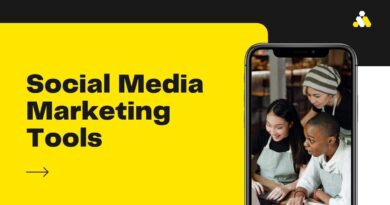Mogul Press Reviews: 10 Ways Technology is Changing the Public Relations Industry
The public relations (PR) industry is undergoing a transformative shift, driven by rapid technological advancements. From social media integration to artificial intelligence and virtual reality, technology is reshaping how PR professionals engage with their audiences, manage campaigns, and measure success.
The traditional methods of media outreach and reputation management are evolving, offering new opportunities and challenges for those in the field. This article explores ten ways technology is changing the PR landscape, highlighting the innovative tools and strategies that are revolutionizing the industry. With insights from Mogul Press Reviews, we’ll delve into how these advancements can enhance PR efforts, improve efficiency, and drive more impactful results. Whether you’re a seasoned PR professional or new to the industry, understanding these technological changes is crucial for staying ahead in the competitive world of public relations.
Table of Contents
1. Social Media Integration in PR Campaigns
Real-Time Engagement
Social media platforms allow PR professionals to engage with their audience in real-time. This immediacy enables timely responses to public inquiries, crisis management, and the promotion of brand messages.
Influencer Collaborations
Influencers on social media platforms have become vital partners for PR campaigns. Their ability to reach niche audiences can amplify brand messages and foster authentic connections.
Analytics and Insights
Social media tools provide detailed analytics, helping PR teams understand audience behavior, measure campaign effectiveness, and refine their strategies accordingly.
Content Distribution
Social media serves as a powerful distribution channel for PR content, from press releases to multimedia campaigns. This broadens the reach and impact of PR efforts.
2. Enhanced Media Monitoring and Analysis
Real-Time Monitoring Tools
Technology has introduced advanced media monitoring tools that track mentions of brands across various platforms, providing real-time updates and insights.
Sentiment Analysis
AI-powered sentiment analysis tools help PR professionals gauge public perception and sentiment towards their brands, enabling more informed decision-making.
Competitor Analysis
Modern media monitoring tools allow PR teams to keep an eye on competitors, understanding their strategies and positioning to stay ahead in the industry.
Crisis Management
Effective media monitoring aids in early detection of potential PR crises, allowing teams to respond swiftly and mitigate negative impacts.
3. Virtual Reality (VR) and Augmented Reality (AR) in PR
Immersive Experiences
VR and AR technologies offer immersive experiences that can captivate audiences, making PR campaigns more engaging and memorable.
Virtual Press Conferences
PR professionals can host virtual press conferences using VR, allowing global participation without the constraints of physical location.
Product Demonstrations
AR can be used for interactive product demonstrations, giving consumers a hands-on experience without leaving their homes.
Storytelling Enhancement
These technologies enhance storytelling by creating vivid, interactive narratives that resonate more deeply with audiences.
4. Artificial Intelligence (AI) and Machine Learning
Predictive Analytics
AI and machine learning enable predictive analytics, helping PR teams anticipate trends and consumer behavior, and adjust their strategies proactively.
Chatbots for Customer Engagement
AI-powered chatbots provide 24/7 customer service, handling inquiries and providing information efficiently, enhancing the brand’s responsiveness.
Content Creation
AI tools assist in content creation, from drafting press releases to generating social media posts, streamlining the workflow for PR professionals.
Personalization
Machine learning algorithms help tailor content and messages to individual preferences, increasing engagement and effectiveness of PR campaigns.
5. Data-Driven Decision Making
Comprehensive Data Collection
Technology enables the collection of vast amounts of data from various sources, providing a comprehensive view of the market and audience.
In-Depth Analysis
Advanced analytics tools allow PR professionals to delve deep into data, uncovering insights that inform strategy and improve campaign outcomes.
Performance Metrics
PR teams can measure the performance of their campaigns with precision, using data to assess reach, engagement, and overall impact.
Strategic Adjustments
Data-driven insights enable PR professionals to make strategic adjustments in real-time, optimizing their efforts for better results.
6. Digital Press Kits and Online Newsrooms
Accessibility
Digital press kits and online newsrooms make information readily accessible to journalists and media outlets, facilitating timely coverage.
Multimedia Integration
These digital resources can incorporate multimedia elements such as videos, images, and infographics, enhancing the storytelling potential of PR materials.
Real-Time Updates
PR teams can update digital press kits and online newsrooms in real-time, ensuring that the most current information is always available.
Cost-Effectiveness
Digital solutions reduce the costs associated with traditional press materials, making PR efforts more economical.
7. Influencer and Blogger Collaborations
Targeted Outreach
Collaborating with influencers and bloggers allows PR professionals to target specific demographics and communities effectively.
Authenticity and Credibility
Influencers bring authenticity and credibility to PR campaigns, as their followers often perceive their endorsements as genuine.
Content Amplification
Influencers and bloggers can amplify PR content through their platforms, reaching a broader audience and increasing engagement.
Long-Term Partnerships
Building long-term partnerships with influencers fosters sustained relationships and ongoing brand advocacy.
8. Online Reputation Management
Monitoring Online Presence
Technology provides tools for monitoring a brand’s online presence, identifying potential issues before they escalate.
Responding to Feedback
PR professionals can use technology to respond promptly to online feedback, addressing concerns and building positive relationships with the audience.
Search Engine Optimization (SEO)
SEO strategies enhance online visibility, ensuring that positive content ranks higher in search results, shaping the brand’s online reputation.
Crisis Response
Effective online reputation management tools aid in swift crisis response, mitigating damage and restoring public trust.
9. Automated Reporting and Analytics
Efficiency
Automated reporting tools save time and effort, providing PR professionals with quick access to performance data and insights.
Customizable Reports
These tools offer customizable reports, allowing PR teams to focus on the metrics that matter most to their specific goals and objectives.
Real-Time Insights
Automated analytics provide real-time insights, enabling PR teams to make data-driven decisions on the fly.
Enhanced Accuracy
Automation reduces the risk of human error, ensuring that reports and analyses are accurate and reliable.
10. Virtual Events and Webinars
Global Reach
Virtual events and webinars remove geographical barriers, allowing PR professionals to reach a global audience without the need for travel.
Cost Savings
Hosting virtual events is cost-effective, eliminating expenses associated with physical venues, travel, and accommodations.
Engagement Tools
Interactive features such as polls, Q&A sessions, and live chats enhance audience engagement during virtual events.
Data Collection
Virtual events enable detailed data collection, providing insights into attendee behavior and preferences that can inform future PR strategies.
Conclusion
Technology is revolutionizing the public relations industry, offering new tools and strategies that enhance the effectiveness of PR campaigns. From social media integration to virtual reality, AI, and data-driven decision-making, PR professionals have a wealth of resources at their disposal to navigate the ever-changing landscape. By embracing these technological advancements, PR teams can stay ahead of the curve, deliver more impactful campaigns, and foster stronger relationships with their audiences.
Incorporating the insights from “Mogul Press Reviews,” PR professionals can leverage technology to innovate and thrive in this dynamic field. By strategically implementing these technological advancements, PR practitioners can not only improve their efficiency but also enhance the reach and impact of their campaigns. The future of public relations lies in the seamless integration of technology, and those who adapt will undoubtedly lead the way in shaping the industry.




